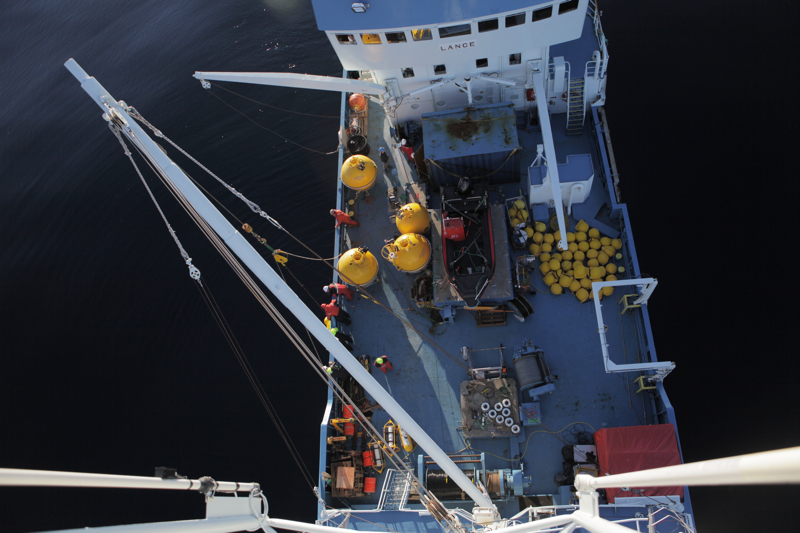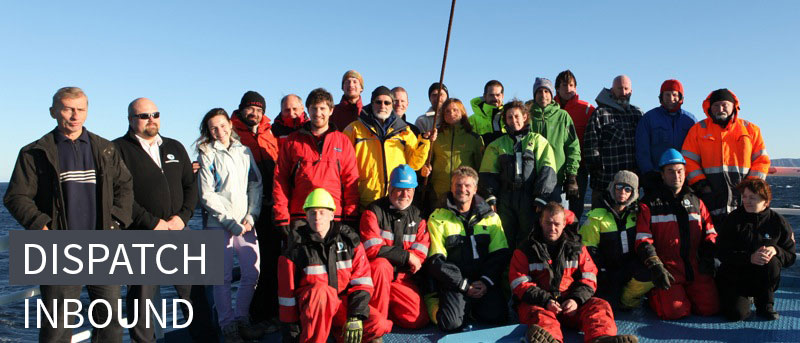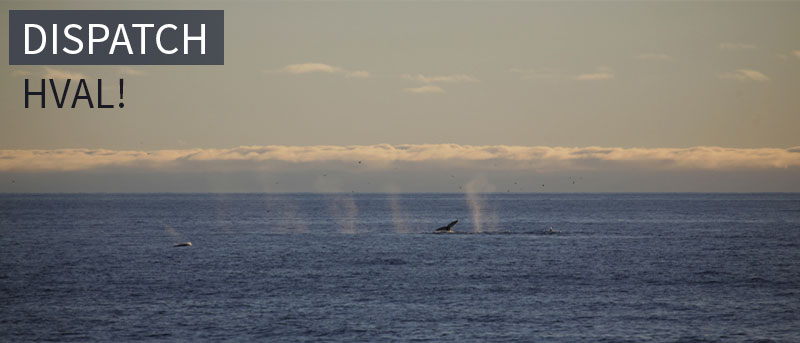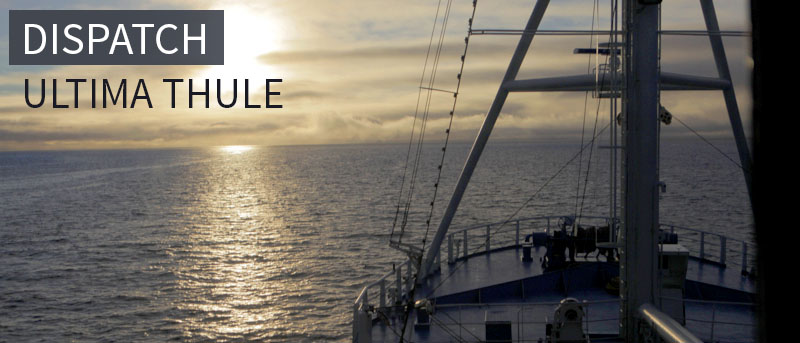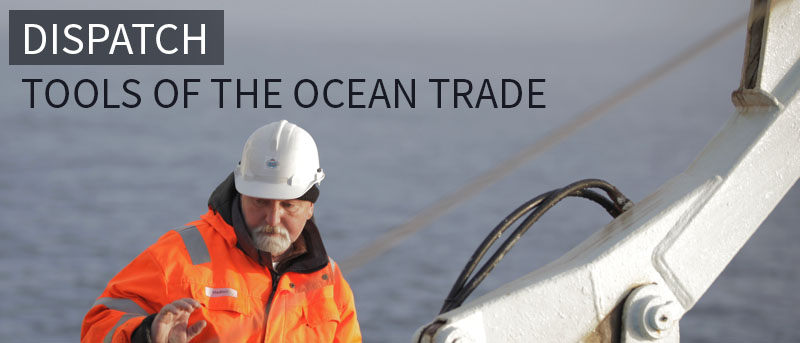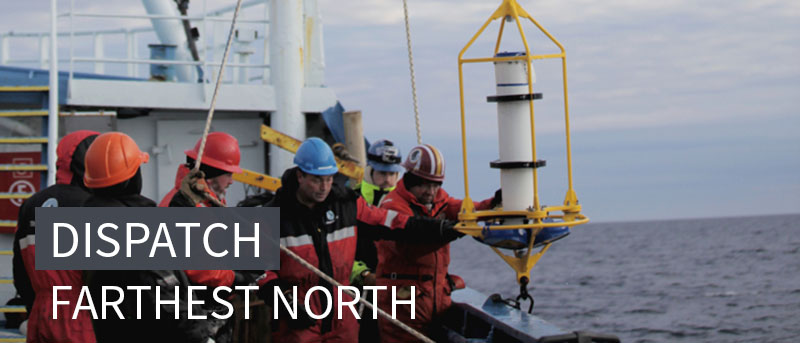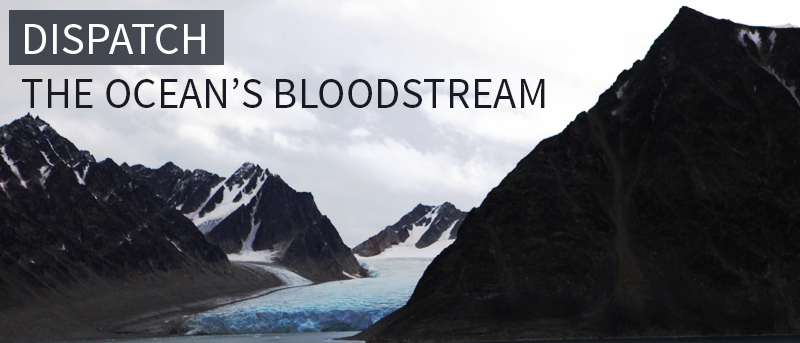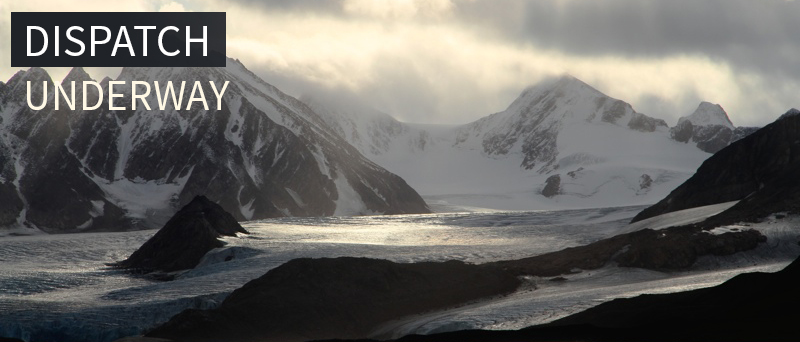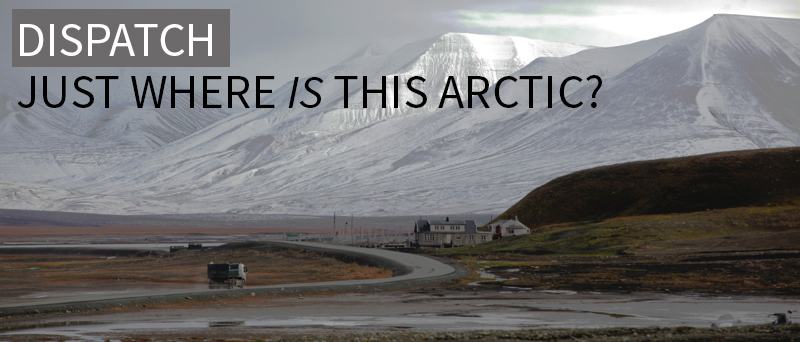THE INVASION OF WARMTH
September 19, 2013
Tweet
It’s an exquisite day up here a tick south of 82° N, dead-flat seas, bright sun and azure sky after days thick o’ fog. If you didn’t know better, if you ignored the GPS coordinates, the flocks of Arctic-adapted fulmars parked like ducks on an urban-park pond, the passing formations of guillemots and little auks with their frenetic wing beats, you’d think we were afloat in the Gulf Stream. It’s not so surprising that we’ve had gentle weather here north of the Atlantic storm track, but sun—that’s surprising and invigorating.
When I was a young man, a head full of literature and metaphor, I considered the scientific view of nature, of the ocean—as opposed to the aesthetic view—chilly and reductive. That view was itself reductive, I recognize, as I remember it with a twinge of embarrassment—and besides I knew little to nothing of science. To my good fortune, I’ve learned a little about at-sea oceanography, and that has deeply enhanced my love for and aesthetic appreciation of the ocean. Besides, this science calls for a sort of literary leap of imagination to visualize that which we cannot see. To grasp the scope and dynamics of the ocean system we need to cast our minds out over vast horizontal distances and into dark vertical depths that we cannot see with our eyes. So let’s step south thousands of miles in order to visualize the ocean’s flow back here into the High Arctic.
Picture the Gulf Stream, that narrow, bruise-blue jet of hot water setting northward through the half-pipe trench between Florida and the Bahamas. Some 25 million cubic meters of water blow past Miami, Ft. Lauderdale, and the Palm Beaches every second. Gaining still more volumetric transport, the Stream hugs the continental shelf halfway up the East Coast of the United States, then bends northeastward out into the open ocean to somewhere near the Grand Banks of Newfoundland. There the Gulf Stream proper gradually expires into disordered filaments of flow, but the current still proceeds toward Europe.
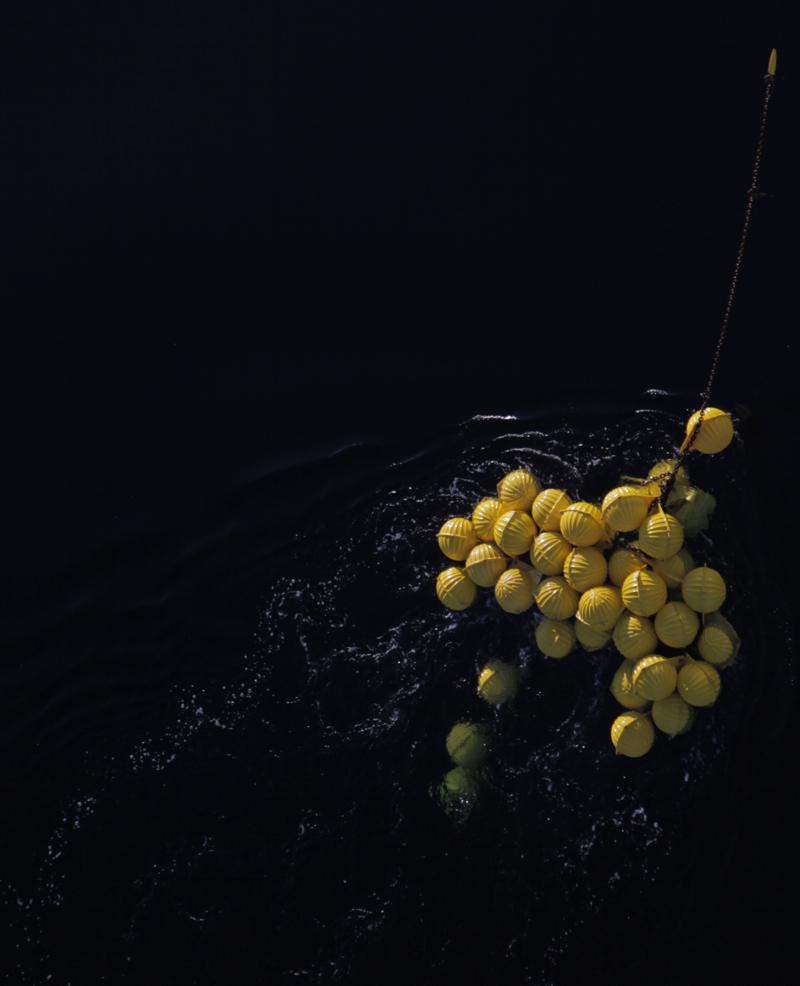
However, contrary to popular notions, the Gulf Stream never reaches Europe. Instead, it bends southward and back toward the equator. But we’re not going that way. For our purposes, we’re following an offshoot of the Stream called the North Atlantic Current that carries the tropical-origin Atlantic water northward past the British Isles, past the coast of Norway, and on beyond the Artic Circle. Most of that water hugs the edges of the Nordic Seas basin—currents like to hug the edges of ocean basins. And after relinquishing most of its heat to the wintery atmosphere, the tropical water “densifies,” in oceanography parlance, eventually sinks, and most of it proceeds back southward at depth between Iceland and east Greenland. (Nature insists that if a quantity of water flows north, then an equal quantity must return south.) This broad pattern of flow has a fancy name: the Meridional Overturning Circulation (MOC), referring to that north-south exchange of heat so vital to the moderation of climate extremes I mentioned the other day. But our story lies still farther north: Some of that warm, salty Atlantic water (AW) proceeds through the Fram Strait between Svalbard and Greenland and into the Arctic Ocean.
A portion of the AW makes a U-turn to head right back southward through the Fram Strait. The remaining northward flow with which we’re concerned is “bathymetrically steered,” as they say, around and through complex submarine troughs and ridges, but farther downstream it reconciles itself into a relatively ordered flow at around 82° N—and that’s where the Lance scientists have laid their picket-fence line of moorings to measure just how much water continues into the Arctic Ocean. What happens to this AW once it flows beyond the study line is only cursorily known.
Because AW is rich in salt, it is relatively dense, that is to say, heavy. Therefore, it resides beneath a cap of lighter, colder water that under “normal” conditions keeps the Atlantic water at depth, away from the ice. There is still a lot we do not know about the dynamics in the Arctic Ocean, but we know, as I mentioned above, that currents like to hug the edges of ocean basins; in fact, this one is called a boundary current. However, like the Arctic itself, it’s unruly and unstable. It twirls off eddies that find their way into the central basin. Wind action may also contribute to this unruliness, causing the Atlantic water to spread into the basin. So here is one of the climate-related aspects of the project: under what conditions might the warm water penetrate the cold cap that at present protects the ice from the warmth?
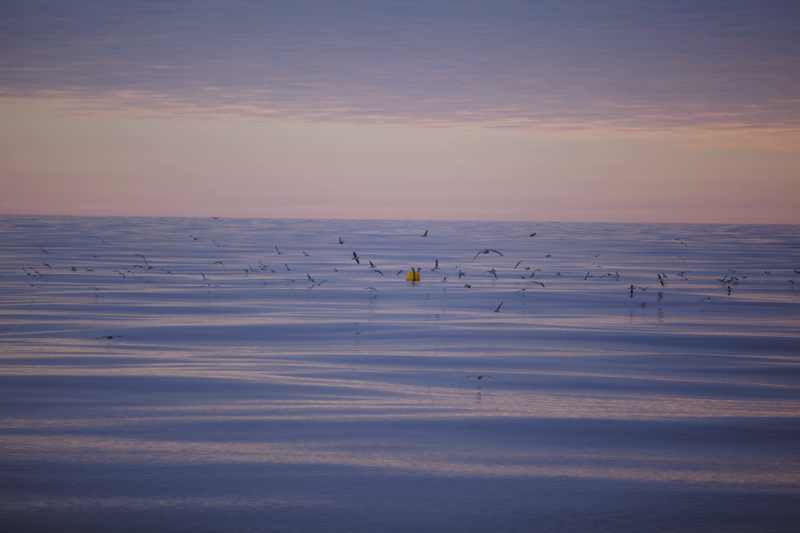
No one knows. In fact, no one knows precisely how much Atlantic water is entering the Arctic Ocean or how it invades the interior basin. That’s what the Lance scientists are trying to measure right now. But it would be reductive to say that they’re doing this work only because of its direct relationship to climate change. Indeed, climate change matters; it lends urgency to this and other Arctic studies, but it is not the sole motivation. I think it safe to say that Vladimir and Bob and their colleagues would be pursuing the same objectives even if climate change were not a factor in the Arctic. They want to know what’s going on here for the sake of knowledge. It’s in the nature of science to seek to understand how the world works. Now, I don’t want to go all high-flown and romantic, but it seems clear that as a species we want to know about the world and our relationship to it enough to exert great effort in the pursuit of understanding. Literature does similar work, just with other tools and from other perspectives.
-Dallas Murphy


